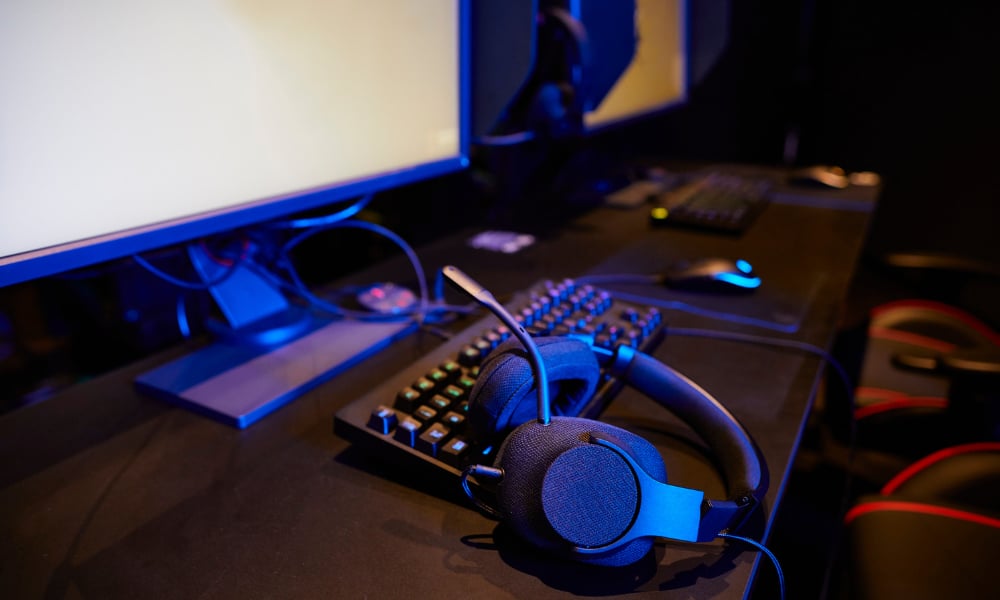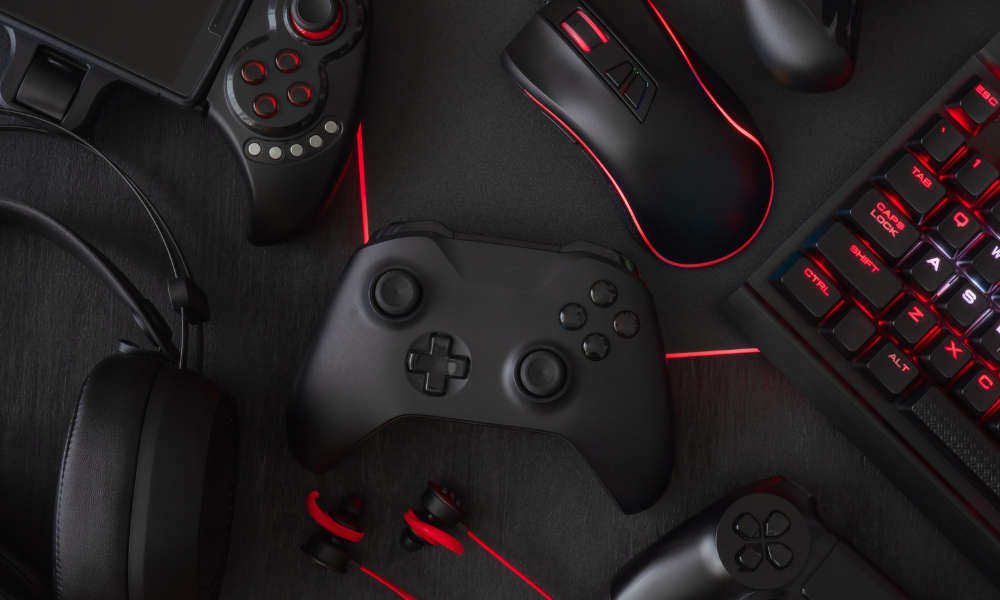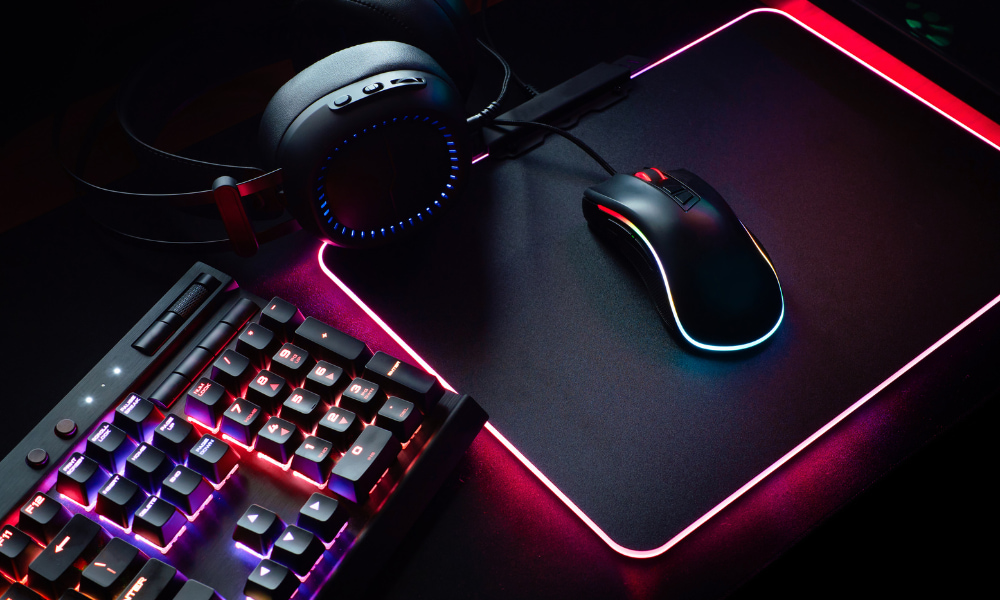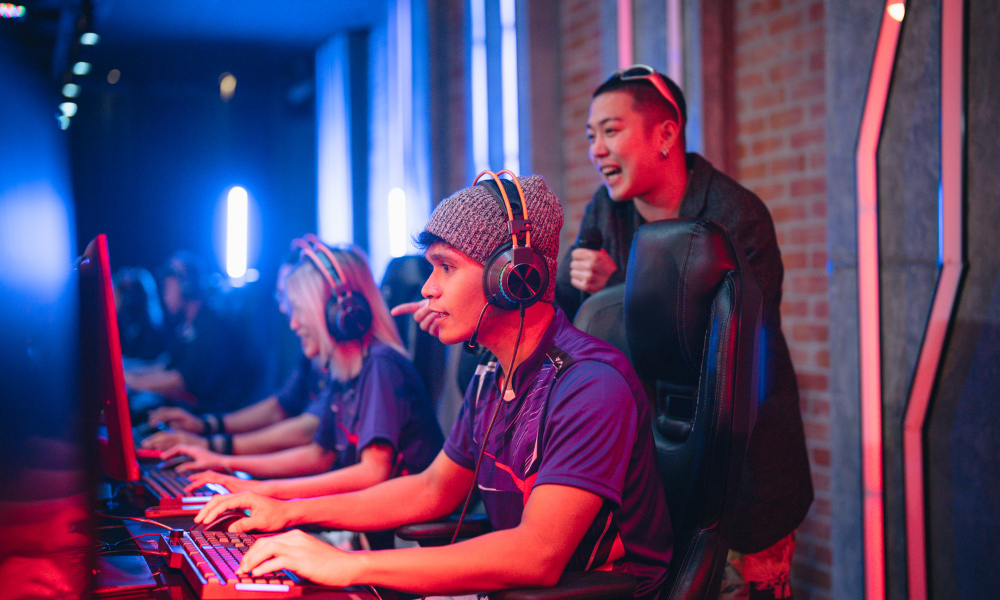Consejos
Cómo crear la mejor estrategia en juegos de estrategia en tiempo real
¡Mejora tus partidas de estrategia en tiempo real con tácticas probadas para el éxito! Descubre maneras prácticas de gestionar recursos, perfeccionar tus tácticas y mantenerte por delante de tus rivales en todos los mapas y plataformas.
Anuncios

Giros de la trama, ataques repentinos y alianzas cambiantes: la diversión impredecible de los juegos de estrategia en tiempo real mantiene a los jugadores interesados desde el primer clic hasta el último enfrentamiento.
Estos juegos ponen a prueba los reflejos y recompensan la planificación, ya que la decisión más insignificante puede cambiar el curso de una partida. Ganar va más allá de las manos rápidas; depende de estrategias precisas y flexibles, y del ritmo.
Para todos aquellos que desean prosperar en el colorido caos de los juegos de estrategia en tiempo real, analizaremos formas prácticas de agudizar los instintos competitivos, leer el campo y superar en maniobras a los rivales.
Establecer líneas de base y objetivos desde el principio
Los jugadores que triunfan en juegos de estrategia en tiempo real definen sus condiciones de victoria antes de que la partida se caliente. Priorizar recursos, elegir las unidades adecuadas y establecer objetivos específicos aumentan las probabilidades de victoria.
Este enfoque con propósito aporta claridad cuando todo avanza con rapidez. Concéntrese en un plan claro: "Estoy asegurando dos centros de recursos y luego reforzando la frontera norte". Estos pasos limitan el pánico y guían cada movimiento.
Acciones de anclaje a prioridades claras
Imagina a un jugador que recoge minerales discretamente mientras traza planes para un ataque aéreo. El hecho de vincular constantemente las acciones con las prioridades originales evita distracciones, especialmente durante fintas o tácticas de distracción de los rivales.
Decir en voz alta: «Mantener el flujo de recursos, reforzar el puesto de avanzada, el centro de exploración» mantiene los objetivos a la vista. Cuando el pánico o la tentación atacan, volver a estas prioridades garantiza el impulso y la concentración.
Cualquier jugador puede reforzar el enfoque delineando tres objetivos al comienzo del juego y actualizándolos cada vez que el campo cambia o aparecen nuevas amenazas.
Ajuste de objetivos a medida que avanza el juego
Los juegos de estrategia en tiempo real cambian rápidamente. Ajustar los objetivos, como pasar de expansión a contención cuando el mapa se llena de unidades enemigas, permite una adaptación inmediata.
Por ejemplo, la frase «Mantener bases, mejorar tecnología y luego contraatacar» indica un cambio de prioridades. Anotar estos objetivos cambiantes es un ancla rápida bajo presión.
Intenta practicar esto con un cronómetro: cada cinco minutos, haz una pausa y reescribe tus tres prioridades principales según el estado actual del juego. Este hábito agudiza la concentración y la flexibilidad.
| Objetivo | Indicador | Respuesta | Llevar |
|---|---|---|---|
| Expandir la economía | Ingresos por recursos estables | Mantener la producción, evitar interrupciones | Verifique los niveles de recursos cada pocos minutos para un crecimiento constante |
| Control de mapas | Puntos clave ocupados | Enviar exploradores, reforzar la frontera | Defender los puntos de estrangulamiento para mantener el control |
| Pico de poder | Se alcanzó el avance tecnológico | Preparar el ejército para el impulso de tiempo | Ataca cuando tus mejoras terminen para obtener el máximo impacto. |
| Adaptar la defensa | Aparece una nueva amenaza | Construir contadores o reposicionar unidades | Responder en dos minutos a las amenazas emergentes |
| Empujón final | Enemigo contra las cuerdas | Comprometer la fuerza principal, cortar las retiradas | No esperes más cuando se presente la oportunidad; termina con un rollo. |
Ejecución de recursos eficientes y tiempos de compilación
Cada acción en los juegos de estrategia en tiempo real se conecta con los recursos: recolectarlos, gastarlos y convertirlos en poder. Ya sea principiante o veterano, optimizar este flujo determina el éxito.
Los juegos más memorables se pierden por una repentina sequía de recursos o se ganan gracias a un aumento inteligente y una inversión oportuna en un ejército o tecnología decisivos.
Bloqueo de órdenes de construcción
Los jugadores usan una secuencia establecida —como "Poner dos trabajadores en cola, construir un depósito de suministros y luego explorar"— para automatizar su apertura. Esta fiabilidad permite centrar la atención en el enemigo, evitando errores costosos.
Con el tiempo, un orden de construcción estricto genera confianza. Guiones como «Cada dos trabajadores, verificar el suministro» refuerzan el cálculo y el ritmo.
- Mantén un orden de construcción durante diez partidas antes de intentar experimentos. Esto desarrolla la memoria muscular para las acciones básicas.
- Programa tu primer cuartel para un desarrollo óptimo del ejército, no solo cuando te sientas listo. Cuanto antes, mejor.
- Nunca pongas demasiadas unidades en cola a la vez. Mantén las líneas de suministro despejadas; esto evita desperdicios y ralentizaciones durante las transiciones de batalla.
- Adáptese añadiendo una segunda base lo antes posible y luego protéjala: la expansión desencadena un crecimiento más rápido que el de una tortuga en casa.
- Crea estructuras de producción con accesos directos automáticos para que nunca olvides crear nuevas unidades, incluso en momentos estresantes.
Verificar cada paso mantiene el crecimiento estable y abre tácticas a mitad del juego.
Gestión de recursos bajo presión
En partidas tensas, es necesario gastar recursos antes de que ocurra un desastre. Si te encuentras con recursos a flote, pon unidades en cola o mejora tu tecnología inmediatamente.
Los jugadores experimentados presionan la tecla de acceso rápido de producción cada pocos segundos, buscando bloques de suministros; decir "no hay tiempo de inactividad" en voz alta durante las grandes peleas mantiene la concentración.
- Revisa el panel de recursos cada 20 segundos durante los primeros cinco minutos. Acostúmbrate al ritmo para que se vuelva mecánico con el tiempo.
- Flota menos de 300 monedas durante la mayor parte del juego. Si ves más de 300, compra mejoras o reinvierte.
- Si te atacan y los recursos aumentan, respira hondo, divide tu atención y gástala en reforzar unidades al instante.
- Antes de expandirse, comprométase a contratar dos grupos adicionales de trabajadores para generar nuevos ingresos rápidamente.
- Comience siempre con un plan para su próxima inversión tecnológica para evitar tiempos muertos entre actualizaciones o unidades.
Practica estos pasos en modo escaramuza para automatizar tu motor antes de enfrentarte a tus rivales en línea.
Implementación de exploración inteligente y control de la información
Explorar revela más que solo la ubicación de los enemigos: impulsa decisiones más inteligentes y te ayuda a reaccionar mejor que tus rivales. La superioridad en información gana más partidas que la fuerza ciega.
Los oponentes pierden impulso cuando son sorprendidos por un ataque inesperado o un cambio tecnológico; la exploración regular e intencional crea esas oportunidades al detectar vulnerabilidades de manera temprana.
Ciclos de exploración de intervalo corto
Programar una exploración cada dos minutos descubre nuevas amenazas y oportunidades; por ejemplo, un jugador observa el movimiento en los puntos de recursos en lugar de en la base principal.
Este hábito desarrolla la capacidad de anticipación: «Observa el minimapa cada 30 segundos, envía exploradores cada dos minutos y revisa las opciones tecnológicas reveladas». Actúa según los cambios observados con cambios rápidos.
Utiliza una unidad prescindible o un explorador aéreo: tener un explorador de respaldo te garantiza que no te pierdas turnos cruciales en medio de la batalla.
Engaño y negación de información
Si sabes que los oponentes están explorando, finge un ejército frontal agrupando unidades en el borde y ocultando las fuerzas reales. Los jugadores lo hacen con mejoras de señuelo o una estructura de cebo.
Cada vez que tu oponente pierda un explorador, modifica la composición visible de tu unidad. Mantén las posibles amenazas ambiguas: los jugadores seguros suelen usar fintas para ralentizar la adaptación del enemigo.
Recuerda, obligar al oponente a adivinar le quita la compostura y hace que sus acciones sean menos eficientes, lo que te da más espacio para controlar el flujo.
Gestión de tácticas en el campo en tiempo real
Cada movimiento en los juegos de estrategia en tiempo real expone sus posibles fortalezas y debilidades. Los jugadores que practican el microcontrol (control de unidades pequeñas) y los ataques estratificados obtienen pequeñas victorias que van en aumento.
Reaccionar a los cambios en el campo exige dedos rápidos, pero los mejores jugadores planifican con antelación sus estrategias de ataque y defensa. Esto elimina las conjeturas y ahorra segundos bajo presión.
Ejecución de maniobras de flanqueo
Atacar desde múltiples ángulos perturba a los defensores. Los jugadores pueden lograrlo asignando una fuerza principal para distraer, mientras dos grupos más pequeños atacan las líneas de recursos y los refuerzos.
Guiones como «Atacar con el equipo principal, esperar cinco segundos, luego flanquear con asaltantes ligeros» rompen las configuraciones defensivas y obligan a reacciones divididas. La clave está en la sincronización, practicada en partidas de práctica.
Utilice comandos rápidos: utilice teclas de acceso rápido para flanquear unidades y ensaye la ejecución de sus movimientos con rapidez, incluso bajo fuego enemigo.
Reforzarse y responder bajo fuego
Cuando la base sea atacada, empieza por poner a los trabajadores a salvo y prepara inmediatamente las defensas y unidades. No te quedes mirando la pelea; sigue produciendo mientras reaccionas.
Repita el guion interno: «Retirar trabajadores, construir defensa, organizar el contraataque». Solo retornar a los trabajadores cuando la amenaza haya desaparecido y lleguen nuevos refuerzos.
Anticípate a los desembarcos o ataques aéreos manteniendo algunas unidades o defensas en reserva. Practica alternar entre combatir en el frente y fortalecer tu economía en casa en intervalos de 10 segundos.
Mejorar el conocimiento del juego y la interpretación de los mapas
La visión del mapa impulsa cada decisión táctica en los juegos de estrategia en tiempo real. Saber dónde pueden surgir amenazas o cuándo surge la oportunidad pone a los jugadores por delante incluso antes de que comience el combate.
Un hábito disciplinado: cada 60 segundos, escanea el minimapa, cuenta los ejércitos visibles y anota qué zonas están oscuras. Esta concentración reduce el riesgo de emboscada y acelera el tiempo de reacción.
Control de territorio clave
Dominar puentes, cuellos de botella y centros de recursos no solo es llamativo, sino que te permite marcar el ritmo de la partida. Asigna patrullas a estos puntos y mantén la visión con unidades o estructuras baratas.
Si una zona clave es disputada, lanza una escaramuza rápida y luego retírate, obligando a los oponentes a perder tiempo y unidades antes de lograr un progreso real.
Los jugadores pueden practicar la negación de territorio eficiente marcando rutas de alto tráfico y priorizándolas para trampas o emboscadas en cada ronda.
Lectura de patrones de movimiento del enemigo
Después de cada exploración, registra adónde envía tropas el oponente con mayor frecuencia. Usa estas notas para predecir su próximo avance.
Repítete: «Si las unidades siguen reapareciendo en el sur, refuerza ese flanco y prepara un contraataque justo después de su despliegue». Seguir este ritmo desbarata su ofensiva.
Esta habilidad predictiva crece al revisar repeticiones e identificar dos o tres caminos de ataque favoritos para cada rival, para luego planificar movimientos preventivos la próxima vez.
Mejorar la toma de decisiones bajo presión
Mantener la calma y la decisión marca la diferencia en los momentos cruciales de los juegos de estrategia en tiempo real. Detenerse un momento para confirmar tus prioridades puede convertir una pelea desastrosa en una victoria.
Las decisiones rápidas se toman con práctica: el cerebro solo duda cuando un movimiento le resulta desconocido. Cuanto más ensayas el juicio instantáneo, más natural se vuelve.
Creando rutinas rápidas
Establece listas de verificación para emergencias comunes: "¿Ataque de base? Defender, explorar, contraatacar". Repítelas en partidos de entrenamiento rápidos, buscando la ejecución automática.
Los jugadores que usan señales verbales, como “Retira el ejército dos” o “Mejora ahora”, crean mejores vínculos de memoria y eliminan retrasos críticos durante el caos.
Intenta realizar simulacros de escenarios durante 10 minutos al día. Así, los guiones se volverán algo natural y tendrás la mente libre para realizar ajustes creativos durante los partidos.
Recuperarse después de errores o sorpresas
Si te toma por sorpresa, reconoce la pérdida, restablece las prioridades y restablece el flujo de recursos. Intenta decir: «Base perdida, reconstruye, no te asustes». Este monólogo interno evita que los errores se acumulen.
Vigila las sobreextensiones del oponente: si persiguen a tus unidades en retirada, tiende una trampa o corta el paso a sus refuerzos. Si sufres un revés, pregúntate rápidamente: "¿Qué puedo controlar aún?".
Esta resiliencia se practica atacando intencionalmente desde atrás o recuperándose en misiones de desafío, creando hábitos de recuperación flexibles para futuras batallas.
Adoptar una mentalidad para el crecimiento continuo
Cada partida en los juegos de estrategia en tiempo real es una prueba, no de suerte, sino de habilidades adaptativas y aprendizaje. Adoptar una mentalidad de crecimiento reduce la frustración y aumenta el progreso.
La mejora comienza revisando cada partida, registrando las órdenes de construcción omitidas, los exploradores perdidos o los cambios de tecnología tardíos. La retroalimentación honesta acelera el desarrollo de habilidades sin hundir la moral.
- Guarda repeticiones de partidas reñidas y revísalas diez minutos después. Detecta errores recurrentes mientras la frustración disminuye.
- Establezca un objetivo para cada sesión, como “Expandir más rápido” o “Explorar una vez por minuto”: ese enfoque único acelera el progreso medible.
- Únete a un grupo o comunidad de aprendizaje para obtener consejos reales. La retroalimentación interactiva revela nuevos puntos débiles e inspira la búsqueda de soluciones.
- Experimenta con regularidad: prueba una estrategia de ataque total, una expansión ambiciosa o una configuración tecnológica compleja. Reflexionar sobre estas estrategias revela tus instintos y descubre puntos débiles en tu estrategia.
- Acepte las pérdidas como investigación. Tras cada derrota, anote la causa: ¿fue un bloqueo de suministro, falta de visión o un microcrédito deficiente? Aborde una causa por sesión.
Los jugadores que siguen estos pasos ven una mejora diaria que los lleva a rangos avanzados más rápido que cualquier truco o táctica individual.
Consejos para ganar constantemente bajo presión
Una conciencia aguda, órdenes de construcción perfeccionadas y una adaptación flexible definen la grandeza en los juegos de estrategia en tiempo real. Hábitos concretos como la exploración rápida y la gestión de recursos agudizan los instintos para cada partida.
Participar en juegos competitivos no solo es cuestión de reflejos, sino de desarrollar una caja de herramientas de rutinas y habilidades de recuperación que se mantengan sin importar la presión o el oponente.
Comprométete a revisar los partidos, perfeccionar los guiones y practicar ejercicios hasta que las respuestas se conviertan en algo natural. La victoria se logra construyendo estas bases partido a partido, buscando siempre la siguiente pequeña mejora.

Consejos sobre cómo personalizar tu equipo
Mejora tu experiencia de juego móvil personalizando tu equipo para obtener mejor precisión, comodidad y rendimiento.
Tendencias

La guía definitiva para iniciar una carrera en los eSports
Desarrollar una carrera en los eSports requiere establecer prioridades claras, perfeccionar habilidades y comprometerse con la comunidad para lograr el éxito a largo plazo.
Continúe Leyendo
La mejor experiencia de RPG en dispositivos móviles: juegos que debes probar
¡Explora mundos inmersivos con RPGs para móviles! Elige tu estilo, diseña tu estrategia y aprovecha cada decisión para crear la aventura perfecta.
Continúe Leyendo
La evolución de los eSports: de afición a profesión global
Desde las raíces de las redes LAN hasta los estadios móviles, la evolución de los eSports combina pasión, habilidad y tecnología, convirtiendo los juegos en una oportunidad global.
Continúe LeyendoTambién te puede interesar

Consejos para mejorar tu coordinación y reflejos en juegos de acción
Mejora tu coordinación y reflejos en juegos de acción con estos ejercicios, consejos y técnicas para un juego más rápido y preciso.
Continúe Leyendo
Cómo jugar mejor con el teclado y el ratón: consejos y trucos
Mejore su experiencia de juego con el teclado y el mouse con consejos sobre precisión, combinaciones de teclas personalizadas, ejercicios de reflejos y configuraciones ergonómicas para un mejor rendimiento.
Continúe Leyendo
El auge de los eSports: el futuro de los juegos competitivos
El auge de los deportes electrónicos ha transformado los juegos competitivos en un movimiento global, impulsado por el trabajo en equipo, la tecnología y la comunidad.
Continúe Leyendo